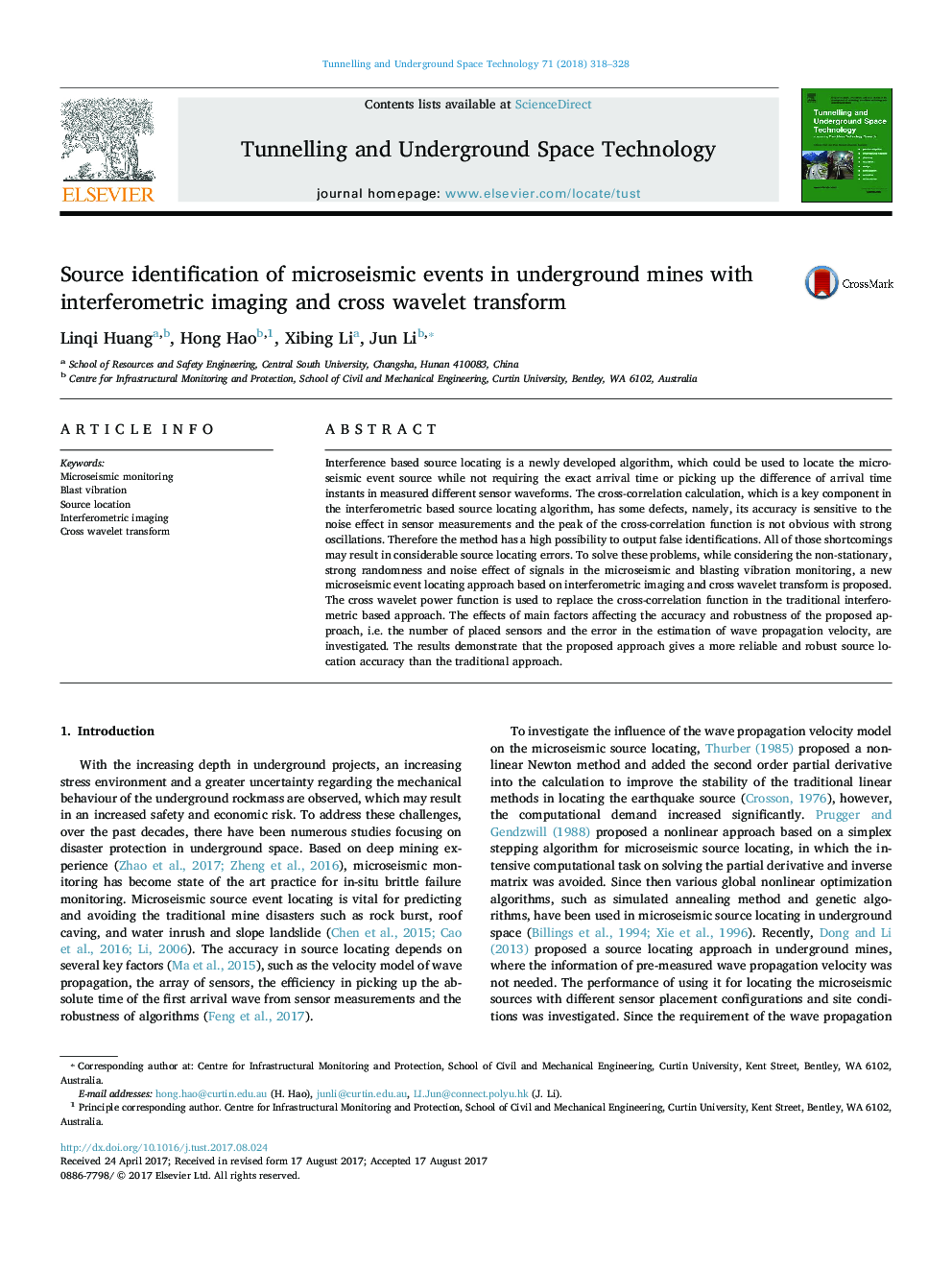| Article ID | Journal | Published Year | Pages | File Type |
|---|---|---|---|---|
| 4929200 | Tunnelling and Underground Space Technology | 2018 | 11 Pages |
â¢Microseismic event source location identification is conducted in underground mines.â¢Interferometric imaging and cross wavelet transform techniques are used.â¢The accuracy and performance are validated with blast tests in a underground mine.
Interference based source locating is a newly developed algorithm, which could be used to locate the microseismic event source while not requiring the exact arrival time or picking up the difference of arrival time instants in measured different sensor waveforms. The cross-correlation calculation, which is a key component in the interferometric based source locating algorithm, has some defects, namely, its accuracy is sensitive to the noise effect in sensor measurements and the peak of the cross-correlation function is not obvious with strong oscillations. Therefore the method has a high possibility to output false identifications. All of those shortcomings may result in considerable source locating errors. To solve these problems, while considering the non-stationary, strong randomness and noise effect of signals in the microseismic and blasting vibration monitoring, a new microseismic event locating approach based on interferometric imaging and cross wavelet transform is proposed. The cross wavelet power function is used to replace the cross-correlation function in the traditional interferometric based approach. The effects of main factors affecting the accuracy and robustness of the proposed approach, i.e. the number of placed sensors and the error in the estimation of wave propagation velocity, are investigated. The results demonstrate that the proposed approach gives a more reliable and robust source location accuracy than the traditional approach.
